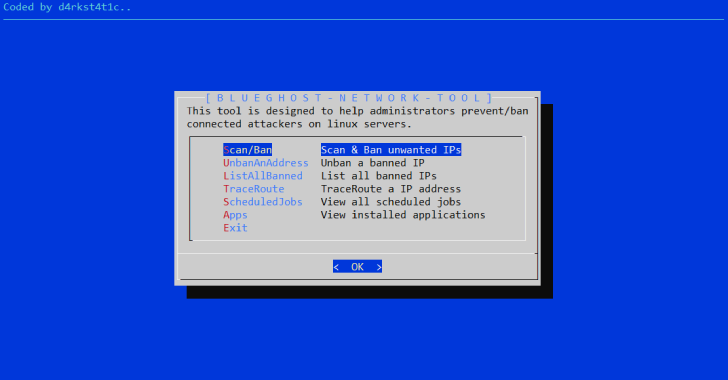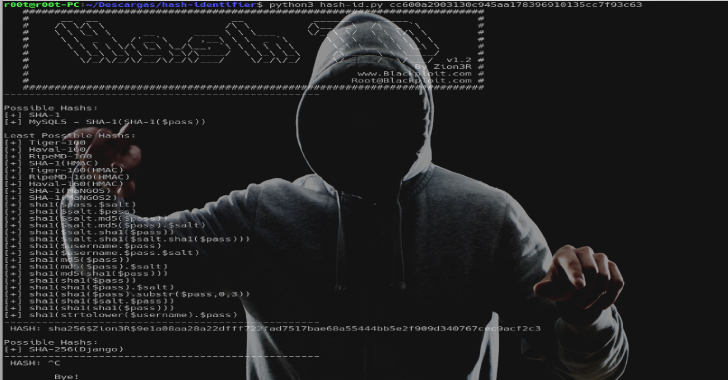Headless Burp provides an extension to Burp that allows you to run Burp Suite’s Spider and Scanner tools in headless mode via command-line.
However, it can do more! It can produce a JUnit like report which in turn could instruct the CI server to mark the build as “failed” whenever any vulnerabilities are found. You can also mark some issues as false positives and those will not be reported anymore on the next scan reports.
Headless Burp Build
./mvnw
The extension is packaged as a fat jar at target/headless-burp-scanner-master-SNAPSHOT-jar-with-dependencies.jar
Also ReadPeda – Python Exploit Development Assistance for GDB
Usage
Bu8ld the extension as shown above or install it from the BApp Store
Using a loclally built extension jar
On *nix:
java -Xmx1G -Djava.awt.headless=true \
-classpath headless-burp-scanner-master-SNAPSHOT-jar-with-dependencies.jar:burpsuite_pro_v1.7.31.jar burp.StartBurp \
--unpause-spider-and-scanner \
--project-file=project.burp -c config.xml
On Cygwin:
java -Xmx1G -Djava.awt.headless=true \
-classpath "headless-burp-scanner-master-SNAPSHOT-jar-with-dependencies.jar;burpsuite_pro_v1.7.31.jar" burp.StartBurp \
--unpause-spider-and-scanner \
--project-file=project.burp -c config.xml
Using the extension from BApp Store
java -Xmx1G -Djava.awt.headless=true \
-classpath burpsuite_pro_v1.7.31.jar burp.StartBurp \
--unpause-spider-and-scanner \
--project-file=project.burp -c config.xml
On Cygwin:
java -Xmx1G -Djava.awt.headless=true \
-classpath "burpsuite_pro_v1.7.31.jar" burp.StartBurp \
--unpause-spider-and-scanner \
--project-file=project.burp -c config.xml
Configuration
<?xml version="1.0" encoding="UTF-8"?>
<config xmlns="http://nets.eu/burp/config">
<reportType>HTML</reportType> <!-- JUNIT|HTML|XML -->
<targetSitemap><![CDATA[http://localhost:5432]]></targetSitemap> <!-- atleast one of targetSitemap or scope must be specified -->
<scope> <!-- atleast one of targetSitemap or scope must be specified -->
<url><![CDATA[http://localhost:5432/]]></url> <!-- multiple allowed -->
<exclusions> <!-- optional -->
<exclusion><![CDATA[localhost:5432/#/logout]]></exclusion>
</exclusions>
</scope>
<false-positives> <!-- optional -->
<issue>
<type>5244416</type>
<path>.*</path>
</issue>
<issue>
<type>5247488</type>
<path>.*bower_components.*</path>
</issue>
</false-positives>
</config>
For an example configuration file, see config.xml and headless-burp-scanner-config.xsd for the xsd
Command-line options
--project-file=VAL Open the specified project file; this will be created as a new project if the file does not exist (mandatory)
-c (--config) <file> Configuration file (mandatory)
-p (--prompt) Indicates whether to prompt the user to confirm the shutdown (useful for debugging)
-v (--verbose) Enable verbose output
--diagnostics Print diagnostic information
--use-defaults Start with default settings
--collaborator-server Run in Collaborator server mode
--collaborator-config=VAL Specify Collaborator server configuration file; defaults to collaborator.config
--config-file=VAL Load the specified project configuration file(s); this option may be repeated to load multiple files
--user-config-file=VAL Load the specified user configuration file(s); this option may be repeated to load multiple files
--auto-repair Automatically repair a corrupted project file specified by the --project-file option
Scenarios
The extension has been designed to be versatile and support several scenarios
Scenario A: Scan URL(s) for security issues using Burp
- Create a file – config.xml like below and add the URL(s) to be scanned to the scope.
<?xml version="1.0" encoding="UTF-8"?>
<config xmlns="http://nets.eu/burp/config">
<reportType>HTML</reportType>
<targetSitemap><![CDATA[http://localhost:5432]]></targetSitemap>
<scope>
<url><![CDATA[http://localhost:5432/auth]]></url>
<url><![CDATA[http://localhost:5432/users]]></url>
<url><![CDATA[http://localhost:5432/users/1]]></url>
<url><![CDATA[http://localhost:5432/users?search=asd]]></url>
<url><![CDATA[http://localhost:5432/bar/foo]]></url>
</scope>
</config>
- Run as shown in the usage section
Scenario B: Scan URL(s) for security issues using Burp but exclude scanning of certain paths
- Add an exclusions block to the configuration file.
<?xml version="1.0" encoding="UTF-8"?>
<config xmlns="http://nets.eu/burp/config">
<reportType>HTML</reportType>
<targetSitemap><![CDATA[http://localhost:5432]]></targetSitemap>
<scope>
<url><![CDATA[http://localhost:5432/auth]]></url>
<url><![CDATA[http://localhost:5432/users]]></url>
<url><![CDATA[http://localhost:5432/users/1]]></url>
<url><![CDATA[http://localhost:5432/users?search=asd]]></url>
<url><![CDATA[http://localhost:5432/bar/foo]]></url>
<exclusions>
<exclusion><![CDATA[localhost:5432/#/logout]]></exclusion>
<exclusion><![CDATA[localhost:5432/#/users/delete]]></exclusion>
<exclusion><![CDATA[localhost:5432/#/creepy/crawly]]></exclusion>
</exclusions>
</scope>
</config>
- Run as shown in the usage section
Scenario C: Scan URL(s) for security issues using Burp but suppress false positives from the scan report
- Add a false-positives block with the issue type and path (these can be retrieved from a burp scan report) to the configuration file. You can find more details about Issue Definitions here
<?xml version="1.0" encoding="UTF-8"?>
<config xmlns="http://nets.eu/burp/config">
<reportType>HTML</reportType>
<targetSitemap><![CDATA[http://localhost:5432]]></targetSitemap>
<scope>
<url><![CDATA[http://localhost:5432/auth]]></url>
<url><![CDATA[http://localhost:5432/users]]></url>
<url><![CDATA[http://localhost:5432/users/1]]></url>
<url><![CDATA[http://localhost:5432/users?search=asd]]></url>
<url><![CDATA[http://localhost:5432/bar/foo]]></url>
<exclusions>
<exclusion><![CDATA[localhost:5432/#/logout]]></exclusion>
<exclusion><![CDATA[localhost:5432/#/users/delete]]></exclusion>
<exclusion><![CDATA[localhost:5432/#/creepy/crawly]]></exclusion>
</exclusions>
<false-positives>
<issue>
<type>5244416</type>
<path>.*</path>
</issue>
<issue>
<type>5247488</type>
<path>.*bower_components.*</path>
</issue>
</false-positives>
</scope>
</config>
- Run as shown in the usage section
Scenario D: Scan more than just GET requests. Use data derived from running functional tests as input to the scan
Sometimes, just spidering a target scope and and performing on a scope of URLs doesnt give much value. For e.g. when scanning a web application where routing is handled using JavaScript. Burp scans can discover more if it can scan more “real-world” requests and responses. This way, it can attack the target URLs more effectively and potentially discover more than a shot in the dark spider + scan approach.
To handle such cases, it would be best to let the burp proxy intercept some real traffic to the target and build up a sitemap for itself. The Headless Burp Proxy extension provides an simple way to achieve this.
- Follow instructions at Headless Burp Proxy and start up burp proxy and remember to set the
--project-fileoption. This is where the “seed” data for scanning is going to be stored. - Configure your functional/integration tests to go through the burp proxy (defaults to
4646if you use the extension) by setting HTTP_PROXY or similar. - Run the functional/integration tests against the target.
- Create a config.xml with the targetSitemap (typically, the base URL of the application), scope, exclusions, false-positives etc.
<?xml version="1.0" encoding="UTF-8"?>
<config xmlns="http://nets.eu/burp/config">
<reportType>HTML</reportType>
<targetSitemap><![CDATA[http://localhost:5432]]></targetSitemap>
<scope>
<url><![CDATA[http://localhost:5432]]></url>
<exclusions>
<exclusion><![CDATA[localhost:5432/#/logout]]></exclusion>
</exclusions>
<false-positives>
<issue>
<type>5244416</type>
<path>.*</path>
</issue>
</false-positives>
</scope>
</config>
- Run as shown in the usage section and remember to set the
--project-fileoption
tl;dr;
The headless burp scanner plugin can do these
- Run burp scan in headless or GUI mode
- Specify target sitemap and add URL(s) to Burp’s target scope
- Use the “seed” request/response data generated by any integration/functional tests you might have
- Mark issues as false positives, these will not be reported in the scan report anymore.
- Spider the target scope.
- Actively scan the target scope.
- Generate a scan report in JUnit/HTML/XML format.
- Shut down Burp
Burp Maven Plugin
Maven plugin that allows you to run Burp Suite’s Proxy and Scanner tools in headless mode.
The plugin is essentially a wrapper around the Headless Burp Proxy and Headless Burp Scanner extensions. It offers easy way to integrate security testing using Burp Suite into the project build lifecycle.
Full example
<build>
...
<plugins>
...
<plugin>
<groupId>eu.nets.burp</groupId>
<artifactId>burp-maven-plugin</artifactId>
<version>master-SNAPSHOT</version>
<configuration>
<burpSuite>burp/burpsuite_pro_v1.7.31.jar</burpSuite>
<burpProjectFile>target/headless-burp-project.burp</burpProjectFile>
<burpConfig>burp/config.xml</burpConfig>
<headless>true</headless>
<promptOnExit>false</promptOnExit>
<verbose>true</verbose>
<skip>false</skip>
</configuration>
<executions>
<execution>
<id>start-burp-proxy</id>
<phase>pre-integration-test</phase>
<goals>
<goal>start-proxy</goal>
</goals>
</execution>
<execution>
<id>stop-burp-proxy</id>
<phase>post-integration-test</phase>
<goals>
<goal>stop-proxy</goal>
</goals>
</execution>
<execution>
<id>start-burp-scan</id>
<phase>verify</phase>
<goals>
<goal>start-scan</goal>
</goals>
</execution>
</executions>
</plugin>
...
</plugins>
...
</build>
Headless Burp Proxy
Provides an extension to Burp that allows you to run, stop and capture results from the Burp proxy tool in headless mode.
Features
- Starts the burp proxy on a provided port (default
4646) - Register a shutdown listener and wait for a shutdown request (default
"SHUTDOWN") on port (default4444). - On receiving a shutdown request, saves the burp project file along with all the information regarding the proxied requests and responses, and finally shuts down Burp
Usage
Start Burp Proxy
On *nix:
java -Xmx1G -Djava.awt.headless=true \
-classpath headless-burp-proxy-master-SNAPSHOT-jar-with-dependencies.jar:burpsuite_pro_v1.7.31.jar burp.StartBurp \
--project-file=project.burp
On Cygwin:
java -Xmx1G -Djava.awt.headless=true \
-classpath "headless-burp-proxy-master-SNAPSHOT-jar-with-dependencies.jar;burpsuite_pro_v1.7.31.jar" burp.StartBurp \
--project-file=project.burp
Command-line Options
--project-file=VAL Open the specified project file; this will be created as a new project if the file does not exist (mandatory)
--proxyPort VAL Proxy port
--shutdownPort VAL Shutdown port
--shutdownKey VAL Shutdown key
-p (--prompt) Indicates whether to prompt the user to confirm the shutdown (useful for debugging)
-v (--verbose) Enable verbose output
--diagnostics Print diagnostic information
--use-defaults Start with default settings
--collaborator-server Run in Collaborator server mode
--collaborator-config=VAL Specify Collaborator server configuration file; defaults to collaborator.config
--config-file=VAL Load the specified project configuration file(s); this option may be repeated to load multiple files
--user-config-file=VAL Load the specified user configuration file(s); this option may be repeated to load multiple files
--auto-repair Automatically repair a corrupted project file specified by the --project-file option
Stop Burp Proxy
echo SHUTDOWN >> /dev/tcp/127.0.0.1/4444
or
echo SHUTDOWN | netcat 127.0.0.1 4444
or
echo SHUTDOWN | ncat 127.0.0.1 4444
















